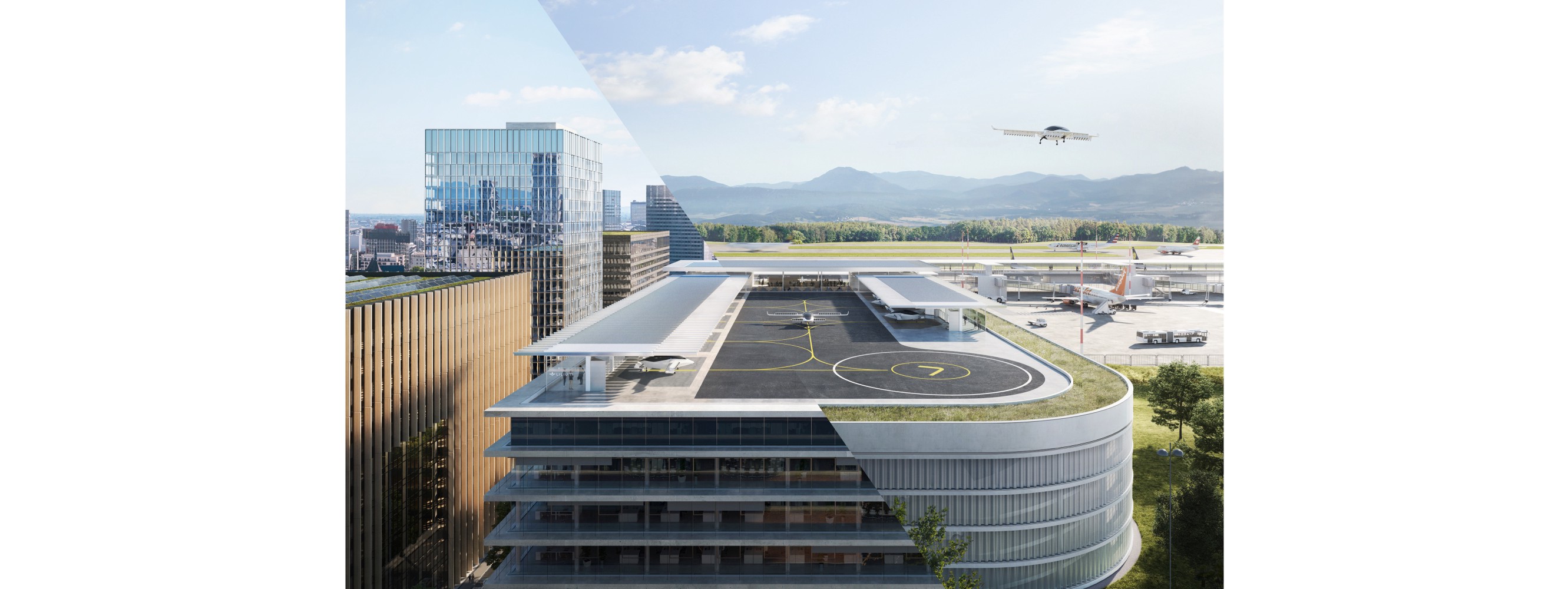
Lilium aims to design vertiports for its vehicles which are smaller, smarter and safer than other designs and that deliver a scalable, high-speed regional transportation system, according to their latest press release.
The company has been focusing on a lean and affordable modular design that make vertiports accessible to developers both large and small, whether incorporated at an existing transport terminal, next to a shopping centre, on top of a busy car park, or alongside a suburban residential development.
The design is based around a limited set of standardised modules making it simpler and more affordable for developers to plan a vertiport on a specific site. Also, the modules can be built off-site, reducing costs and allowing for rapid on-site construction.
Lilium has created three different vertiport designs using similar modular elements.
Each module consists of a set of functional components that are optimised for regulatory compliance and reliable operations. Recognising the critical importance of safety to customers and local communities, Lilium have followed existing regulations where applicable, for example, in the design of safety areas, obstacle clearance, and landing and take-off regions, which have a diameter of 1.5x the ‘critical dimension’, that is the wingspan of a Lilium Jet. Where new rules are required, the company are working closely with relevant regulators to develop them.
In the case that a vertiport is retrofitted to an existing building, an underlying load-transfer structure may be required. This will be constructed independently from the vertiport module.
Whether a vertiport is designed to facilitate 20 flights per day or 20 flights per hour, it will have three common ingredients: a take-off area, parking stands and a terminal, as well as high-powered charging equipment, air traffic control technology for high through-put operations and digital check-in tools. The company hope to bundle this all into a standardised ‘plug-and-play’ solutions system.
Much like today’s heliports, future vertiports will have an area specifically dedicated to take-off and landing. Sometimes referred to as a FATO (Final Approach and Take-Off) or a TLOF (Touchdown and Lift-Off area), this will be a focal point for operations and be surrounded by a safety zone.
The design of this safety zone has been driven, in the first instance, by established guidance for heliports, as have many other operational elements, like approach slopes and obstacle clearance guidelines. The company continues to work closely with regulators and other industry players to tailor this guidance more directly to future eVTOL operations.
On the ground, the Lilium Jet will travel under its own power using electric motors (only making the noise of a slow-moving electric vehicle) along defined taxiways to and from the parking stands.
Passengers will board and disembark the Lilium Jet at such a parking stand where the aircraft will also be cleaned, checked and charged for its next journey. Luggage is loaded here whilst the aircraft transfers flight data. The parking stands are sized to ensure there is no danger to passengers or ground staff while moving around the aircraft.
The company has designed a terminal that focuses on delivering a seamless and frictionless experience for their customers with a focus on reducing processing and waiting to a minimum. There will be no emphasis on retail, duty-free shops or hospitality offerings as rapid embarkation and “saving time” for passengers is of the essence.
The Lilium design concept of the terminal building is simple, but adaptable. The roof and enclosure offer ways to connect the vertiport to its local area, whether this is a rural village or a megacity.
Keeping the design “lean and modular” allows the vertiport network to grow rapidly, delivering high-speed connectivity in a fraction of the time it typically takes to build roads or railways.
The design also allows a flexibility to tailor the standardised layouts, depending on the location, the passenger demand and available space. Vertiports, in their smallest configuration, can be built for as little as EUR1 million. The more basic versions of a vertiport are typically ground-based, with small waiting areas and a limited set of gates for charging. Larger, elevated structures require a higher investment of between EUR7–15 million, depending on their situation and size.
Must Watch Visual Future Vertiport Presentation (At bottom of page)
https://medium.com/@LiliumAviation/designing-a-scalable-vertiport-c12e75be1ec5

